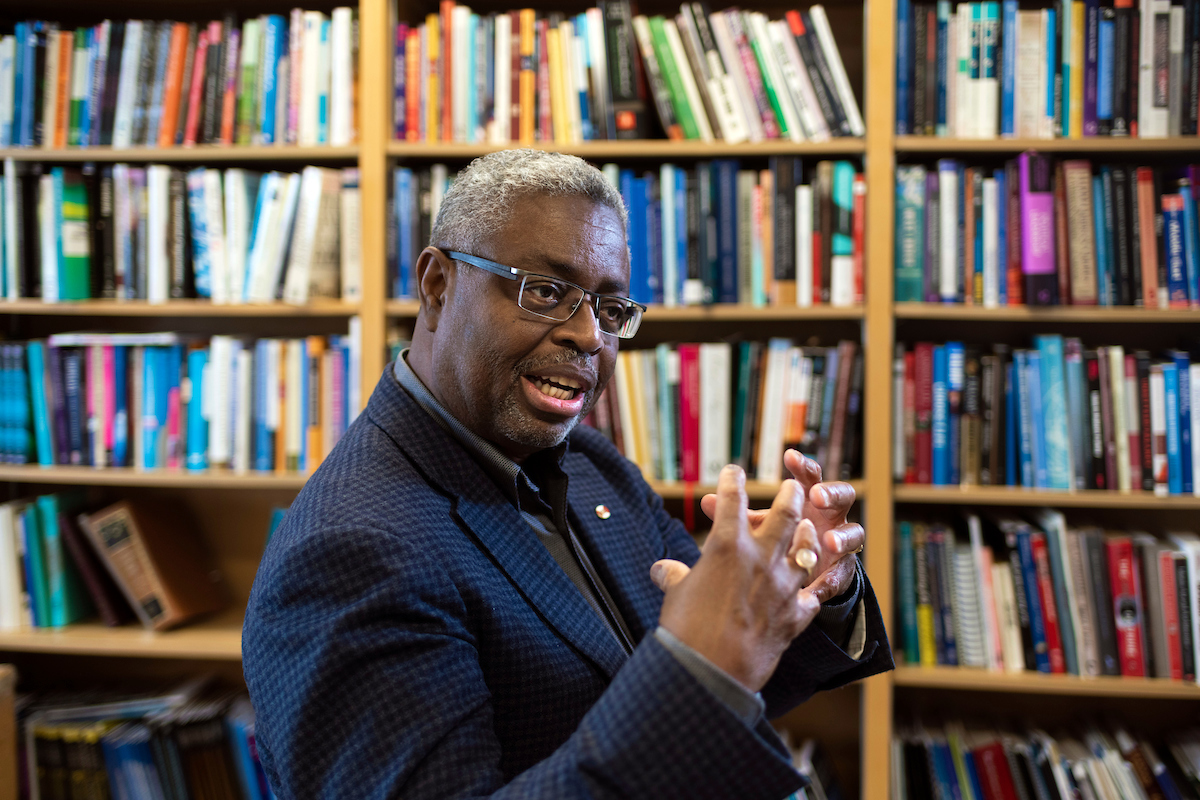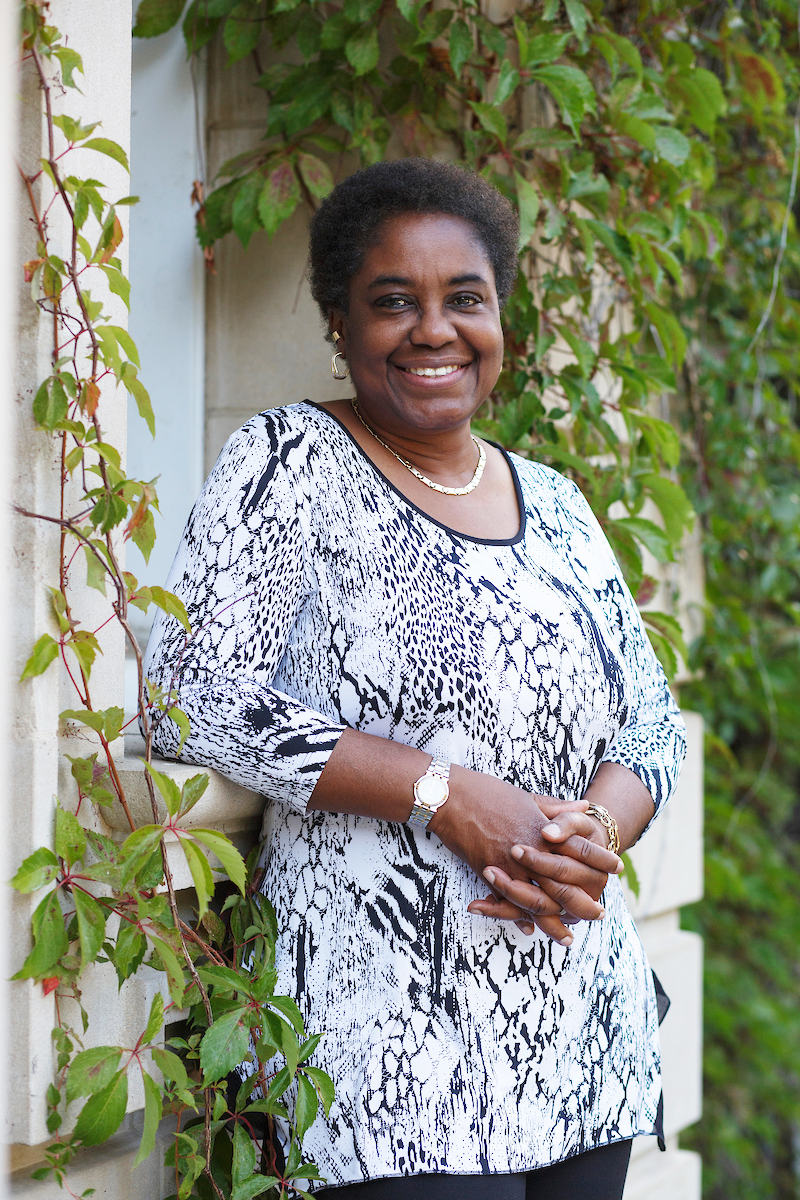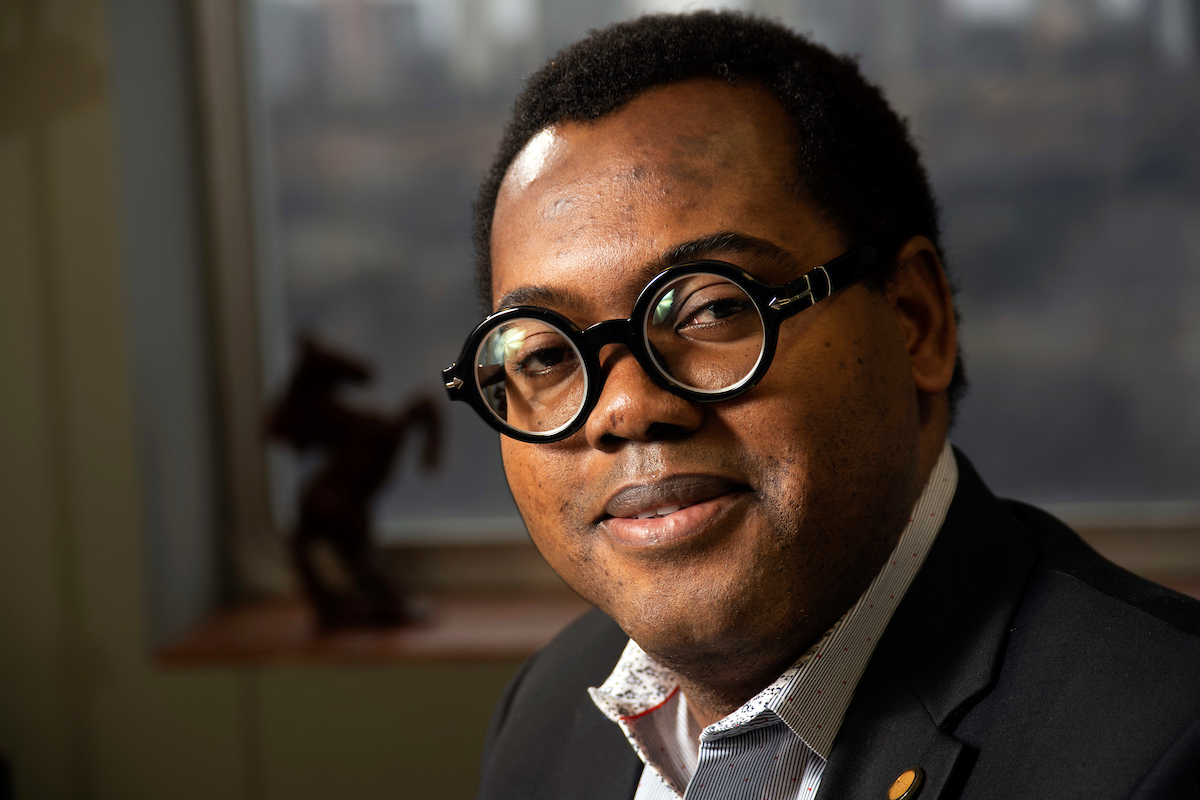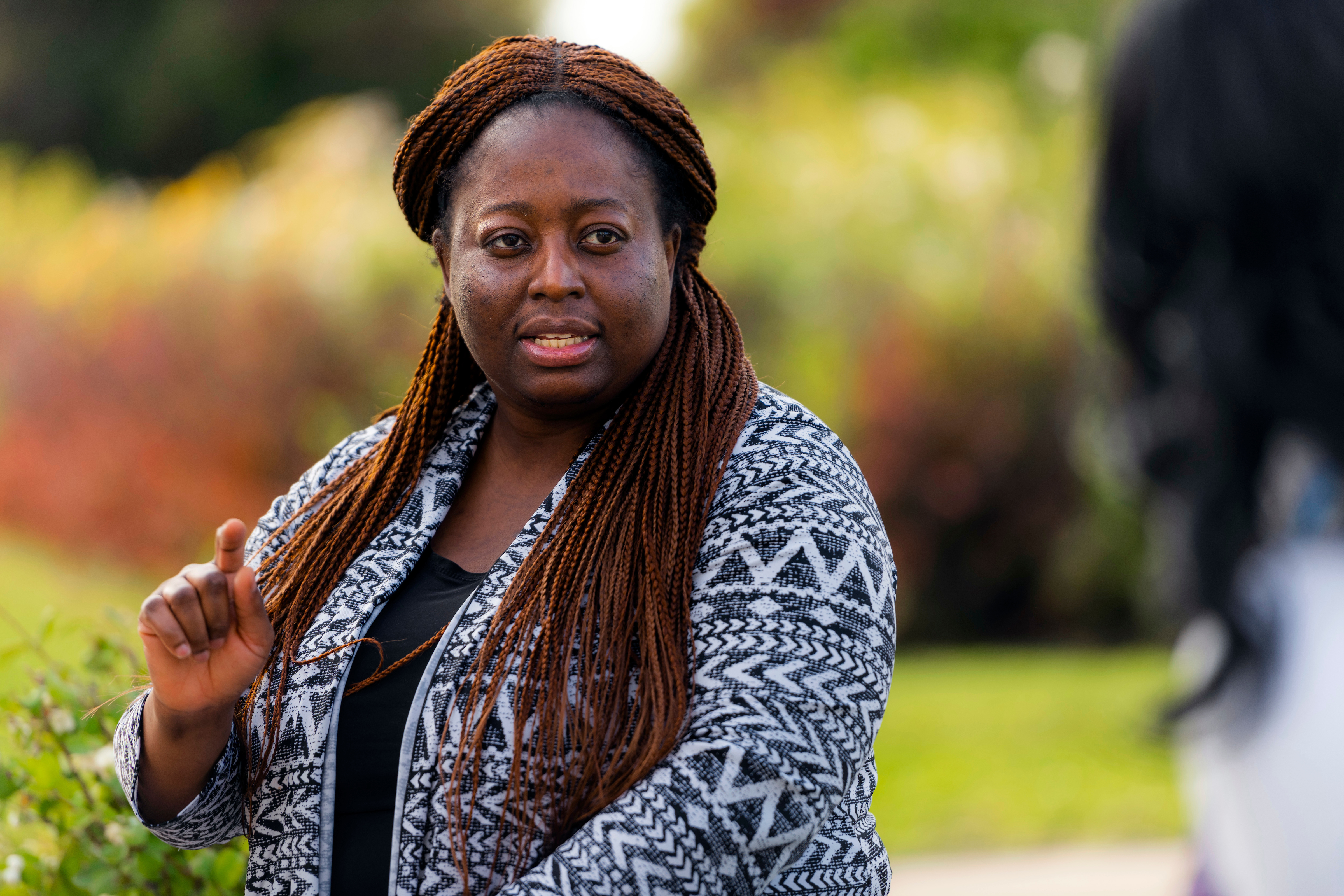Black scholars at the University of Alberta and elsewhere have been decrying systemic racism for decades.
But in light of massive protests around the world following the violent deaths last summer of George Floyd, Elijah McClain, Breonna Taylor and other Black Americans, they are amplifying ongoing demands for action.

“The dehumanization of people of colour must end,” said Andy Knight , a U of A expert on international politics and professor in the Faculty of Arts .
“The notion that white folks are superior to others seems to be ingrained in many people in our society. White privilege is rampant, even though most white people would want to deny it.
“We need to break down that notion of white superiority.”
While it is found almost everywhere, systemic racism is often most insidious in liberal institutions, said Knight—even in bastions of progressive thought like universities. It manifests in what he calls “polite racism.”
“Universities have adopted the rhetoric of inclusion and diversity without challenging and changing the values, structures and behaviours that perpetuate systemic racism,” he said.
“Discourses of inclusiveness and diversity usually remain at the rhetorical level…. Using those terms gives the impression an institution is being ‘progressive’ when in actual fact it may not be.”
The U of A’s Black Graduate Students’ Association is also calling for action . In a statement issued this summer, it asks the university to include race and ethnicity when collecting demographic information of students, faculty and staff; to hire and retain Black faculty; to provide infrastructural support to help Black students; and to take measures to eliminate “toxic anti-Black educational and workplace environments that harm Black students on campus.”
It also calls for measures to improve relationships between Indigenous and non-Indigenous students, faculty and staff at the university.
“Many of our Black students are interested in developing a comprehensive understanding of Indigenous history, knowledge, curriculum and contributions to the University of Alberta and the greater Edmonton community,” reads the statement.
For his part, U of A president Bill Flanagan has stressed that the university is “ deeply committed to achieving equity, diversity, and inclusivity at the U of A. We condemn all racism, including specifically anti-Black racism and anti-Indigenous racism, and see education as a key vehicle for change in the world.”
Universities have adopted the rhetoric of inclusion and diversity without challenging and changing the values, structures and behaviours that perpetuate systemic racism
Moving beyond rhetoric
Calling for change and using all the right words is one thing; bringing about lasting change in a meaningful way is another. How, exactly, do you do it?
Training and education in all public institutions on the relationship between our colonial history and racism top the list of Black scholars’ recommendations.
They also cite the active recruitment of Black staff and faculty; placing value on Black community engagement and participation in equity, diversity and inclusion work; using the same yardstick of evaluation for everyone and highlighting the outstanding accomplishments of Black faculty and staff.

First and foremost, moving beyond rhetoric necessitates a clear understanding of what systemic racism is, how it works and how to identify it, because it’s often difficult to see, according to political scientist Malinda S. Smith, co-author of The Equity Myth: Racialization and Indigeneity at Canadian Universities .
“People clearly do not have very good race literacy, and they especially do not understand concepts like ‘systemic racism’ and how it differs from, for example, individual prejudice or symptoms of racism, like slurs,” said the U of A alumna and former provost fellow on equity, diversity and inclusion policy, now at the University of Calgary.
Smith said it’s important to remember that calling out systemic racism doesn’t necessarily mean pointing the finger at white individuals, holding them responsible for 400 years of racial oppression, or suggesting that everyone in a given institution is racist.
“White people tend to display what Robin DiAngelo called ‘white fragility,’” said Smith. “They tend to react with defensiveness and are more concerned about the word—‘what, you’re calling me a racist?’—and their hurt feelings than they are about the often unrecognized harms of racism and its impact on racialized minorities.
“When we talk about systemic racism, we are referring to institutionalized patterns of discrimination and disadvantage that impact Black people in education, employment, income, experiences in the criminal justice system—across social, economic and political institutions.”
To see the patterns of racial disparities, particularly over time, we need to collect disaggregated data, and that just isn’t happening consistently across the country, said Smith.
Just as you need to do widespread COVID-19 testing to see where the coronavirus is spreading, you need to collect data to see where racial discrimination resides.
“We need the provinces and Statistics Canada to collaborate, to ensure consistent data collection and dissemination,” she said.
“With the data it becomes possible for policy makers to ask why such racial disparities exist and, when necessary, design interventions to ensure more fair and equitable treatment.”
Collecting data on hiring and student recruitment is now a top priority for the U of A, according to the new Strategic Plan for Equity, Diversity and Inclusivity . It aims to combat racial descrimination with concrete action, and to “weave equity, diversity and inclusivity into the fabric of our culture.” It includes benchmark measures such as annual progress assessments.
With the data it becomes possible for policy makers to ask why such racial disparities exist and, when necessary, design interventions to ensure more fair and equitable treatment.
Societal implications
Complete transparency regarding hiring, positions, wages and salaries of staff at all levels in public institutions would also be a move forward, said Temitope Oriola , a sociologist in the Faculty of Arts who penned an open letter following the death of George Floyd, signed by 23 other faculty members at the U of A, in which he drew parallels between racial hatred in America and “the maltreatment of and entrenched bigotry against Indigenous peoples in Canada.”

“This may indicate income disparities among employees of the same rank. The secrecy and ‘confidentiality’ of such matters often inadvertently provide cover for ethically challenged and outright illegal behaviour,” Oriola noted.
When it comes to policing, Oriola has long argued that Canadian forces need to hire more women—and more university graduates.
"College-educated officers have been found overwhelmingly to not be as involved in incidents of excessive force,” he said.
“Courses they've taken in sociology, psychology, political science and social work mean there is a greater understanding of what's going on in the rest of society.”
He cited a 2014 report by former Supreme Court justice Frank Iacobucci , submitted to the Toronto Police Service following the death of Sammy Yatim in July 2013, calling for “screening out psychopathology and screening in for desirable traits such as emotional intelligence, empathy, tolerance of diversity, and patience.”
Transparent and targeted hiring
In the academy, Oriola calls for deliberate efforts to promote Black scholars to administrative positions. It has a “stubborn tendency to not happen naturally,” he said. “People have to make it happen.”
He said he will recommend a policy, much like Penn State’s Administrative Fellows Program , to U of A president Bill Flanagan and dean of arts Steve Patten “after they have had a reasonable time to settle into their new positions.”
Beyond that, Flanagan has been consulting with Black faculty and staff since taking office on what more can be done to address racial inequity.
Their recommendations include conducting audits for representativeness, inclusiveness and accessibility; critically examining criteria for excellence that might be posing barriers or simply making pathways to success exclusive; changing recruitment and selection practices to be more inclusive; and ensuring the university is a welcoming and supportive place.
Mentoring Black students
Successful mentoring of Black students is also crucial in increasing the number of Black scholars in the academy, said Oriola. As with faculty promotion, it doesn’t happen naturally.
“Academia is a massive pipeline,” he said, which is “fundamentally shaped by mentoring or lack thereof.” Faculty need to be incentivized to mentor undergraduate minority students, he added.
To that end, about a dozen faculty members have launched a mentoring program for Black students at the U of A this term, modelled after similar programs at the University of Toronto and Dalhousie.

One of the program’s organizers, associate professor Bukola Oladunni Salami in the Faculty of Nursing , was once a student in the U of T’s mentorship program and is convinced it made a huge difference in guiding her academic career.
“Several people who took the program with me are now doctors, speech pathologists, professors, and so on—it’s what gave me the vision to get to where I am now.”
She stressed there are any number of measures that could go a long way toward eradicating systemic racism—from training in unconscious bias to targeted hiring practices to adopting comprehensive anti-racism strategies across institutions.
We only need unwavering commitment and political will to make it happen, she added, finally putting mere lip service behind us.
“We need to move past rhetoric and symbolic statements about being in solidarity with people who have experienced racism,” agreed Knight.
“We need to reflect on why polite racism exists in governments, universities, hospitals, places of worship, sports venues—everywhere in our communities.”
U of A mentorship program helps Black high-schoolers succeed in university
Program pairs youth with students and professors to give them a head start on academic skills—and help them deal with discrimination.
Full Story